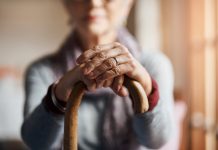How will the aging population impact the provision and sustainability of care? We put the question to Dr Yukari Nakano, Executive Officer at the Japanese Nursing Association
People are living longer than ever before, and though this is a positive sign of improvements to physical and social surroundings, many still spend their twilight years in poor health. Population aging also equates to a greater demand for long-term care and an expanded healthcare workforce capable of providing the specialized care many older adults need.adult
The number of people aged 80 or older is expected to triple between 2020 and 2050 to reach 426 million, according to the World Health Organization. In Japan, a country often seen as a leading example in supporting healthy aging, 30% of the population is already over 60, according to the WHO, and, according to national data, more than one in 10 people are aged 80 years or older. (1) Yet, declining birth rates, labor shortages, and increased age-related public spending have put a strain on the country’s economy and sustainability of care provision.
According to government data, the estimated average annual nursing care cost per capita is projected to increase by 75% to ¥235,000 in 2050 compared to 2019. (2) To help support access to care for citizens with low incomes, the Ministry of Health, Labor and Welfare (MHLW) recently presented a proposal to increase long- term care insurance premiums for people aged 65 and over with high incomes. To find out what this means for Japan’s nursing workforce and nursing care costs, we spoke to Dr Yukari Nakano, Executive Officer at the Japanese Nursing Association.
What is the role of the Japanese Nursing Association?
The Japanese Nursing Association is the foremost professional body of nursing, established in 1946. We are working on three missions: assuring and improving the quality of nursing, improving working conditions for nurses, and developing and innovating new areas or roles within nursing. To fulfill these core missions, we are working hard to promote better political decision-making by advocating, negotiating, and lobbying with supporting evidence.
How does the rapidly aging population affect the healthcare system in Japan?
Japan is recognized as an early achiever in UHC in international comparisons and is a leading country in terms of facing challenges. As you will know, Japan’s rapidly aging population with declining birthrate is causing a significant impact on health issues: in terms of both quantity and quality. At the same time, it is causing institutional challenges regarding how the system can be sustained.
What are the main current issues related to nursing?
The aging population with a declining birthrate also affects the nursing delivery system. In particular, there is an urgent need to recruit and retain nursing professionals to provide nursing care that meets the population’s needs and eliminate maldistribution within the workplace and field to provide seamless and efficient care.
How have policies addressed aging?
Japan has been promoting healthcare policies for about a decade against the rapid increase in the elderly population, aiming for 2025, when the aging problem will become quantitatively more serious. It is the so-called ‘community-based integrated care,’ a comprehensive support and service delivery system that integrates healthcare, prevention, welfare services, housing, lifestyle support, and so on to achieve ‘aging in place.’
After 2040, when the elderly population will peak, we will not only see further declining birthrates, super-aging, and population decline but also, qualitative changes in the elderly population. Health disparities will widen, and local administrative functions that support people will weaken. The challenges we must address will become even more serious.
So, to make ‘community-based integrated care’ more effective by 2040, the government has proposed the concept of a ‘mutually-supportive community.’ People (and various entities) in the community must participate and be connected with resources beyond generations and fields, transcending ‘stove-piping’ and ‘supporters’ and ‘receivers’ in each system and field. The framework for reform to realize this concept is based on four points: strengthening the ability to resolve regional issues, strengthening connections throughout the region, strengthening comprehensive support based on the community, and maximizing the use of the functions of nursing professionals.
What major steps would you like to see taken at the policy level in the future?
The Japanese Nursing Association believes that nursing specialty based on ‘medical’ and ‘life’ perspectives is useful in these four frameworks for a ‘mutually- supportive community.’ Considering these perspectives, the function of nursing will be expected to be expanded to provide care to people and support their health in the community.
Nursing care within the department of outpatients in hospitals and clinics is important as a base of support for people who continue their treatment and recuperation while living a life in the community. But there has not been sufficient discussion about how this service should be provided, or its institutional evaluation. In addition, despite recognition of the importance of home-nursing services, which accompany patients from home care to end-of-life care, there is still much room for public investment. So, these services have not yet been fully and evenly distributed.
Healthcare systems in Japan have focused on responding to diseases after they have appeared, and a large amount of social security funds and healthcare resources have been invested in treatment. On the other hand, resources for health promotion and disease prevention are not sufficient.
From this perspective, the JNA believes that a system to maintain and promote the health of all people in the community will be more important in the future and aims to create nursing activity centers that fulfill the ‘primary healthcare function.’ More resources and funds should be invested in such areas, such as a nurse-led services model.
We believe that such enhanced primary healthcare by nurses will contribute to the efficient use of healthcare resources and funds, as well as to the maintenance and strengthening of UHC, including long-term care, as the healthcare needs of society increase and become more diverse and complex.
References
- https://www.weforum.org/agenda/2023/09/elderly-oldest-population-world-japan/
- https://www.japantimes.co.jp/news/2023/11/07/japan/society/nursing-care-cost/
Contributor Details
Editor's Recommended Articles
-
Must Read >> Preparing for the future: Canada’s aging population














